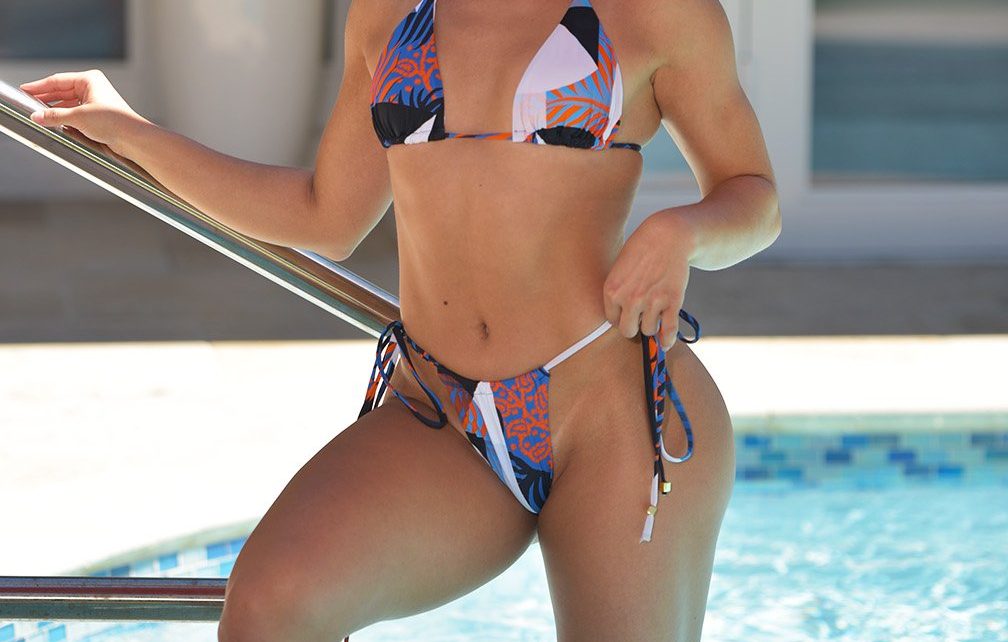Swimwear trends often push boundaries, but some styles dive too deep into controversy, like bottom no coverage inappropriate swimsuits. Many wearers find themselves questioning if they cross a line in poolside fashion. For those looking to make a splash without causing a stir, striking a balance between style and modesty is key. Understanding where to draw the line can help you navigate the waters of swimwear choices with confidence and flair.
Bottom No Coverage Inappropriate Swimsuits: Understanding the Trends and Their Impact
Swimsuits are a pivotal part of summer, beach outings, and pool parties. Among the vast options available, there’s a rising trend that has captured attention: bottom no coverage inappropriate swimsuits. While they can be stylish and daring, they often raise questions about appropriateness, comfort, and body positivity. In this section, we’ll explore different aspects of these swimsuits, from what they are, their appeal, and potential issues that come along with them.
What Are Bottom No Coverage Inappropriate Swimsuits?
Bottom no coverage swimsuits can be characterized by their minimal fabric on the lower half. These can include:
- **Thongs:** Swimsuits with a strip of fabric at the back, offering little to no coverage.
- **Cheeky Bikinis:** Swimsuits that cover just the essentials, exposing most of the rear.
- **String Bikinis:** Swimsuits that use thin strings to hold the top and bottom pieces together, offering minimal coverage.
- **High-Cut Swimsuits:** With legs cut high on the sides, they can reveal more skin than standard options.
These swimsuits are often seen in fashion magazine spreads and on social media influencers. They cater to a bold crowd looking to showcase their body confidence.
Why Are They Popular?
The popularity of bottom no coverage swimsuits can be attributed to several factors:
Fashion Trends
Fashion keeps evolving, with beachwear reflecting current trends. Minimalist designs offer a chic and modern look that appeals to many. Social media plays a massive role in popularizing specific styles. When influencers sport eye-catching swimsuits, followers often feel compelled to join the trend.
Body Positivity Movement
As society embraces body positivity, more people feel empowered to wear what makes them feel good. Swimsuits with less coverage can be seen as a celebration of one’s body, encouraging self-love. This movement advocates for people of all shapes and sizes to express themselves without shame.
Comfort and Freedom
Some individuals find that less fabric offers greater comfort while swimming or sunbathing. The feeling of water against the skin can be enjoyable, and minimal coverage can prevent unwanted tan lines.
Potential Issues with Bottom No Coverage Inappropriate Swimsuits
While many enjoy these daring styles, they come with concerns that wearers should consider carefully.
Social Settings
Wearing a bottom no coverage swimsuit might not always be appropriate. Here are some considerations:
- Family Gatherings: A family beach day may require more coverage, especially around children.
- Public Pools: Some public pools have strict dress codes that may not permit minimal coverage swimsuits.
- Cultural Sensitivity: Different cultures have varying norms regarding swimwear, and it’s vital to be aware of these when traveling.
Body Image Concerns
Although body positivity is empowering, not everyone feels comfortable wearing minimal coverage swimsuits. Some might experience anxiety or self-consciousness. It’s essential to:
- Know your comfort level and choose swimsuits that make you feel confident.
- Remember that everyone’s body is different, and what works for one person may not work for another.
Sun Exposure
Less fabric means more skin exposure to the sun, which can lead to sunburn and skin damage. Here are tips to stay safe:
- Apply sunscreen generously 30 minutes before sun exposure.
- Reapply every two hours, especially after swimming or sweating.
- Consider wearing a cover-up when not in the water to protect your skin.
Choosing the Right Bottom No Coverage Swimsuit
If you decide to embrace the bottom no coverage trend, finding the right swimsuit is key. This section will guide you through selecting a swimsuit that balances style and comfort.
Understand Your Body Shape
Recognizing your body shape can help you find a swimsuit that compliments your figure. Here are some common shapes and tips:
- Hourglass: Most styles look great, but cheeky or high-cut options can accentuate your curves.
- Pear: Look for swimsuits with more coverage on the bottom to balance your proportions.
- Apple: High-cut swimsuits can elongate the legs while offering support around the midsection.
- Rectangle: Look for styles that offer ruffles or cuts that add volume and shape.
Pay Attention to Material
The fabric of a swimsuit can significantly affect comfort and durability. Here’s what to consider:
- Chlorine Resistance: If swimming in pools, look for chlorine-resistant materials.
- Quick-Drying: Fabrics like polyester and nylon dry faster and are great for active days.
- Stretch Quality: Ensure the fabric maintains its shape while being flexible enough to move.
Prioritize Fit
Finding a swimsuit that fits well is crucial. A poorly fitting swimsuit can lead to discomfort and wardrobe malfunctions. Here’s how to ensure a good fit:
- Try on multiple sizes; brands may vary in their sizing.
- Consider adjustable straps or ties for a more customized fit.
- Check for coverage around the back and sides to ensure you feel secure.
Styling Your Bottom No Coverage Swimsuit
Once you’ve chosen the perfect swimsuit, styling it for the beach or pool adds an extra touch. Here are some ideas:
Cover-Ups
Cover-ups can enhance your look while providing coverage when needed. Options include:
- Kaftans: Loose-fitting and lightweight, they’re great for leisurely strolls.
- Maxi Dresses: Flowing and stylish, perfect for transitioning from beach to café.
- Shorts: Denim or lightweight shorts can be casual and comfortable.
Accessories
Accessories complete your beach outfit. Consider:
- Wide-Brimmed Hats: They add sun protection and style.
- Sunglasses: Protect your eyes while looking fashionable.
- Beach Bags: Opt for a bag that matches your swimsuit and fits all your essentials.
Footwear
Choosing the right footwear can elevate your look:
- Flip-Flops: Comfortable and easy to slip on, ideal for beach days.
- Espadrilles: A bit more stylish while still practical.
- Sandals: Look for waterproof options for added convenience.
Environmental Considerations
As you enjoy your time in swimsuits, it’s also important to think about the environment. The fashion industry can significantly impact our planet. Here are some ways to be more eco-conscious while swimming:
Sustainable Materials
Look for swimsuits made from recycled materials, which reduces waste and pollution. Many brands now focus on sustainability, and you can find stylish options that are also good for the earth.
Care for Your Swimwear
Proper care can extend the life of your swimsuit:
- Rinse with cold water after each use to remove chlorine and salt.
- Hand wash gently instead of machine washing to prevent wear and tear.
- Air dry your swimsuit instead of using a dryer to maintain its shape.
Support Eco-Friendly Brands
Choose brands that prioritize environmental responsibility. Research brands that focus on ethical practices and use sustainable materials. By doing so, you support efforts to create a greener fashion industry.
Bottom no coverage inappropriate swimsuits represent a bold and fashionable choice for many. While they celebrate body positivity and personal style, it’s essential to think about the appropriateness, comfort, and impact on the environment. By understanding the trends, selecting the right fit, and styling thoughtfully, you can enjoy wearing these swimsuits while feeling confident and chic. Embrace your unique style and make informed choices as you step into the sun, enjoying every moment of summer fun!
Show Yourself In Baggy Clothes then Show Yourself In A Bikini | #Shorts
Frequently Asked Questions
“`html
What are some signs that a swimsuit bottom may not offer enough coverage?
When a swimsuit bottom lacks sufficient coverage, you might notice that it rides up or shifts position easily. Additionally, if you feel self-conscious or overly exposed while wearing it, that’s a significant indicator. Overly tight seams or fabric that feels too thin can also suggest inadequate coverage.
How can I choose a swimsuit bottom that provides adequate coverage?
To select a swimsuit bottom with adequate coverage, look for styles that offer more fabric on the sides and back, such as boy shorts or high-waisted options. Check the sizing guide to ensure a proper fit. Fabrics with a bit more elasticity and thickness can help provide comfort and support as well.
Are there specific body types that should avoid low-coverage swimsuit bottoms?
While anyone can wear low-coverage swimsuit bottoms, individuals with specific body types may feel more comfortable in designs that offer additional coverage. For example, those with curvier figures may prefer styles that provide a balance and support. Ultimately, comfort and confidence play key roles in choosing the right swimsuit.
What can I do if I feel uncomfortable in my swimsuit bottom?
If you feel uncomfortable in your swimsuit bottom, consider adjusting your choice or how you wear it. You might want to try different sizes or styles that offer more coverage. Adding a cover-up or sarong can also help you feel more secure while maintaining your beach look.
Do swimwear brands vary significantly in coverage styles?
Yes, swimwear brands often have different approaches to coverage styles. Some brands focus on trendy, minimal coverage, while others prioritize modesty and support. It’s essential to explore various brands and read customer reviews to find swimsuits that align with your coverage preferences.
“`
Final Thoughts
Bottom no coverage inappropriate swimsuits often spark debate regarding body positivity and personal choice. While some embrace the freedom and style, others express concern over appropriateness in public settings.
Choosing such swimsuits requires careful consideration of where and how you intend to wear them. Ultimately, it’s essential to balance self-expression with social expectations to ensure confidence and comfort.
In summary, while bottom no coverage inappropriate swimsuits can be fashionable, it’s vital to evaluate the context and setting to choose swimwear that suits both personal style and social norms.





